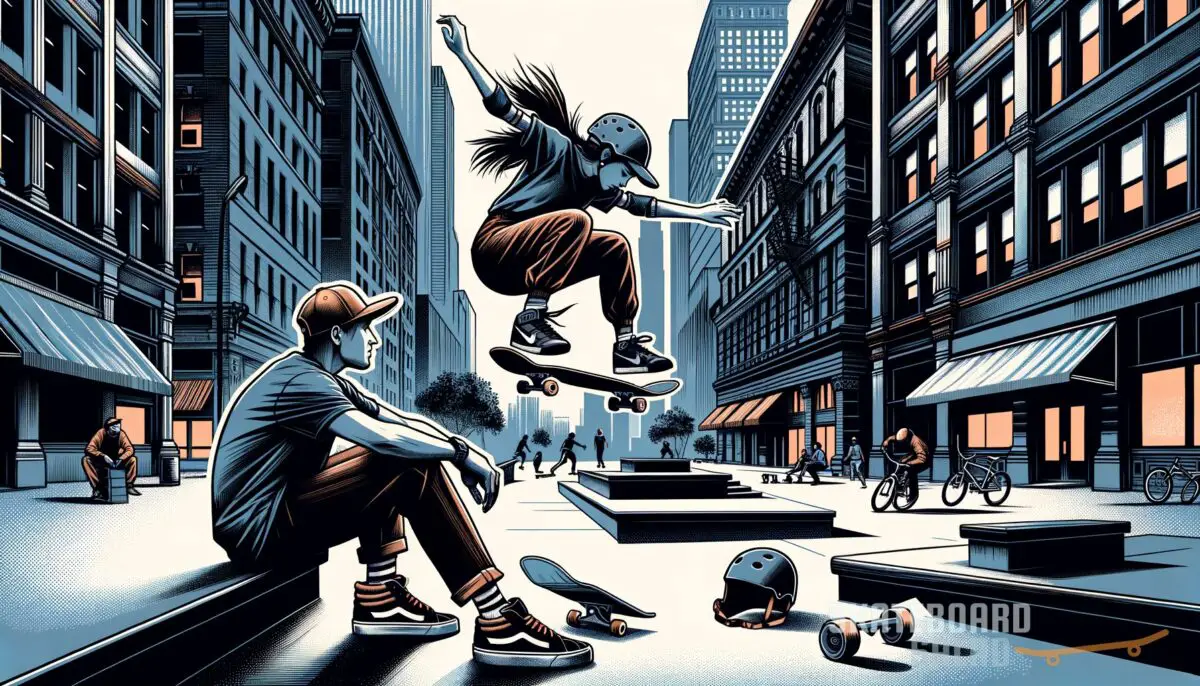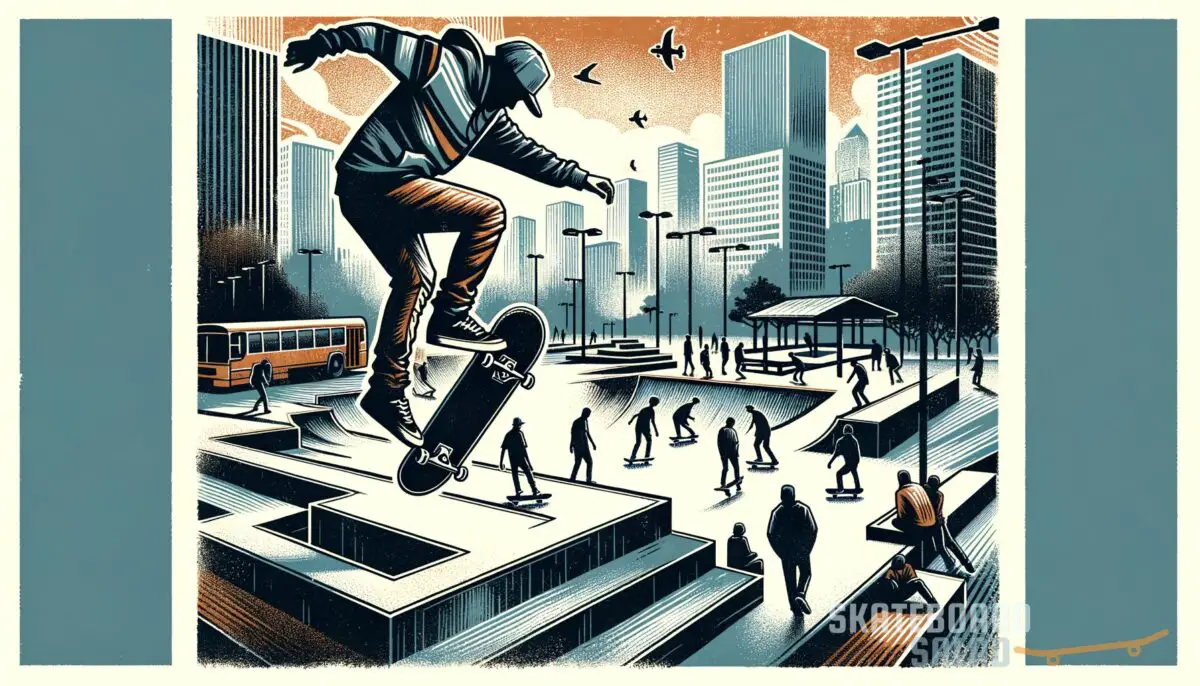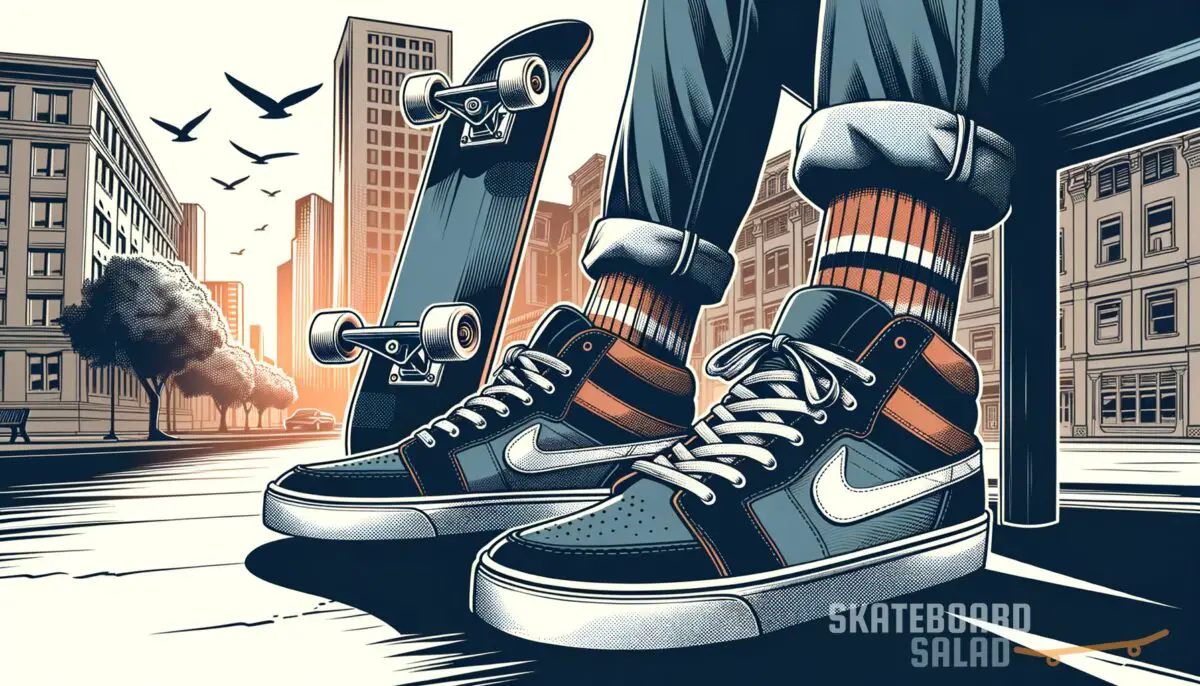Are you a beginner skateboarder feeling overwhelmed by the different sizes, shapes, and materials of skateboard decks available on the market? Fear not, my friend. In this post, you will learn everything you need to know about skateboard decks, including their materials, the manufacturing process, the different types of decks, and how to choose the right one for your skating style.
Choosing the wrong skateboard deck can affect your skating progression. So don’t let that happen to you! This post might be a bit of a marathon, but it won’t be a snooze-fest. We’ll go through it all in a way that’ll make you say, “that was gnarly!” (pun intended).
What is a deck? A deck is the flat surface of a skateboard used for standing and performing tricks. It’s typically made of multiple layers of wood or composite material and comes in various sizes, shapes, and materials to suit different styles of skating.
What is a deck, and why is it important?
A deck is the flat surface of a skateboard used for standing and performing tricks. It’s usually made of several layers of maple wood but can also be made of composite materials like carbon fiber, bamboo, or plastic. The layers of wood are glued together to create a strong and flexible skateboard deck that can withstand the impact of jumps, tricks, and grinds.
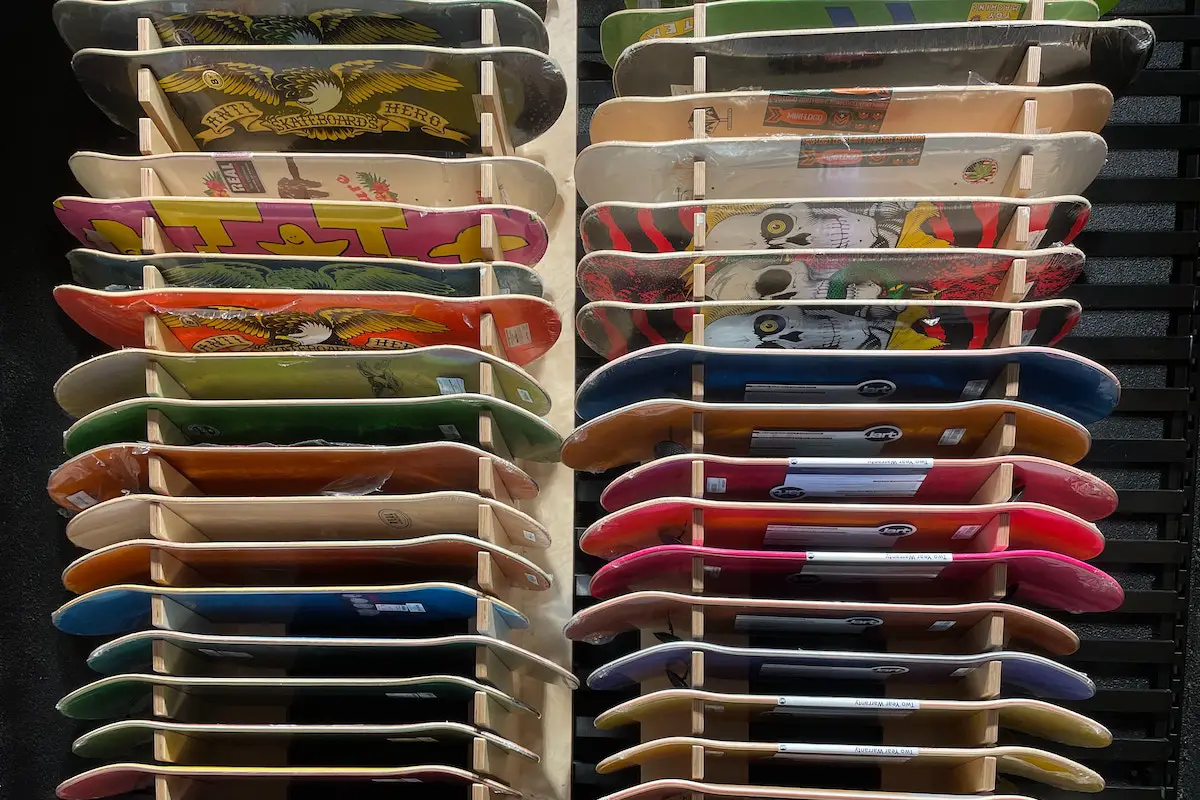
It is the most important part of a skateboard because it provides the rider’s platform and determines the board’s performance characteristics, such as stability, maneuverability, and pop. In addition, a good skateboard deck makes it easier to skate comfortably and safely, which helps your progress as a skateboarder.
Enjoi Whitey Panda Skateboard Deck

Enjoi Whitey Panda Skateboard Deck
What are skateboard decks made of?
Skateboard decks are made of seven layers of thin wood veneers held together with adhesive. Using the appropriate type of wood and adhesive is critical to ensure excellent quality.
Wood
Hard rock maple or sugar maple is the preferred type of wood for making skateboard decks. It is commonly sourced from the Great Lakes region of North America. Maple is a hardwood that grows slower and is denser than softwoods. This species is also used in making other products like baseball bats, bowling alley lanes, and NBA basketball courts.
Adhesive
A strong adhesive that can hold the veneer plies together is crucial for skateboards. This adhesive must have high adhesion, resiliency, and waterproofness to maintain its shape over time. Polyvinyl glue, or PVA, is the most commonly used adhesive. This non-toxic, water-based glue is mixed with a catalyst to speed up drying time.
How are skateboard decks manufactured?
Making a skateboard deck starts with collecting thin layers of wood, also known as veneers, required to create each deck. These veneers must be dried out to about 8% moisture content and then sanded down on both sides using a special machine.
Once the veneers are sanded, they are glued and stacked in a hydraulic press. This press shapes the board, including its nose, tail, and concave. This process ensures that the board is strong and durable to avoid delaminating, which can happen when the layers of wood come apart.
After the board is pressed, it is left to dry for a few days before drilling holes in the trucks and cutting out its shape. The edges are then rounded and sanded down to provide a smooth finish.
A layer of lacquer is applied to protect the wood. Many companies add cool designs to the board using heat transfer printing, which can be an essential selling point for some buyers.
What is a concave?
The curvature of a skateboard deck that runs lengthwise is known as concave. Increasing this curvature enables greater pressure on the board’s edges, improving steering and facilitating easier flipping. Skateboard decks are classified as having low, medium, or high concave.
…the most popular choice for skateboarders unsure about their concave preferences or those who are beginners.
Skateboard decks with low concave have a slight curvature, resulting in a more stable ride but limited agility. Additionally, these decks are challenging to flip.
In contrast, medium concave decks compromise low and high concave decks. They are the most popular choice for skateboarders unsure about their concave preferences or those who are beginners.
High concave decks have a more pronounced curvature, enabling greater agility and easier flipping. However, these decks are less forgiving of mistakes than medium or low concave decks.
What are the different types of skateboard decks?
There are several types of skateboard decks, each designed for different skating styles. Some common types of skateboard decks include:
Popsicle decks
Popsicle decks are named after their shape, which resembles a popsicle stick. They are the most common type of skateboard deck, used by many skaters for all-around skating. Popsicle decks are symmetrical, meaning they have the same shape and curvature at both ends, with a rounded nose and tail. This allows skaters to perform tricks from either end of the board without worrying about the deck’s orientation.
The width of popsicle decks ranges from 7.5 to 8.5 inches, although variations are outside of this range. They are typically made of seven to nine plies of hard rock maple wood, which provides a good balance of strength, durability, and pop.
Popsicle decks are versatile, allowing skaters to perform a wide range of tricks and maneuvers, and are suitable for all levels of skaters, from beginners to professionals. There are many designs and graphics to choose from to show off your style and creativity.
Old-school decks
Old-school decks are a type of skateboard deck that originated in the 1970s and 1980s and are still used today for cruising and vert skating. They are wider and flatter than popsicle decks, with a pointed nose and a squared tail. The wider shape of old-school decks provides more stability and control for cruising and transportation. The squared tail allows greater leverage and control when performing tricks on transitional and vertical surfaces.
Old-school decks are often made of maple wood but can also be made of other materials like bamboo, fiberglass, or carbon fiber. They can vary in size but are typically wider than popsicle decks, ranging from 8.5 to 10 inches in width. The larger size of old-school decks provides more room for foot placement and a wider stance for carving, pumping, and sliding.
Old-school decks are suitable for cruising, transportation, and vert skating, where riders need a stable and responsive deck that can handle high speeds, steep banks, and sharp turns. They are also popular among skateboard collectors and enthusiasts who appreciate their vintage style and aesthetic.
Cruiser decks
Cruiser decks are a type of skateboard deck designed for cruising and commuting. Cruiser decks are wider than popsicle decks, ranging from 8.5 to 10 inches in width, with a slightly curved shape and a longer wheelbase. Its shape provides a more stable and comfortable platform for riding, while the longer wheelbase allows for smoother and more fluid turns.
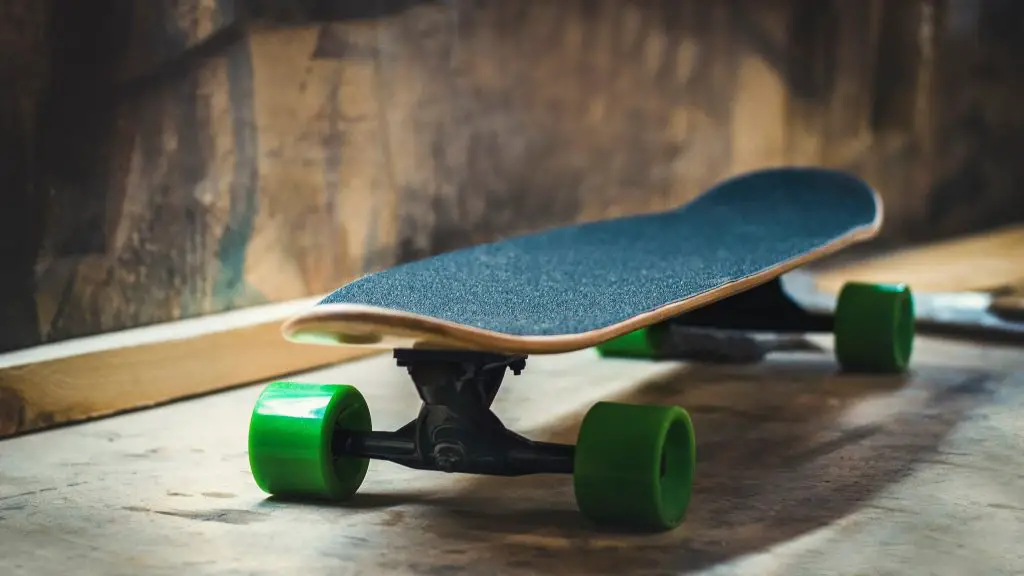
They are typically more flexible than popsicle decks, which provide a smoother ride over rough surfaces and absorb shock from bumps and cracks. Cruiser decks also come with larger and softer wheels, ranging from 55mm to 65mm in diameter, which provides better traction and control over various terrains, such as pavement, gravel, or dirt.
Cruiser decks are designed for cruising and commuting and are not typically used for tricks or technical skating. However, they can still be used for basic maneuvers such as manuals and ollies. Cruiser decks are suitable for all levels of skaters and are a popular choice for those who want to travel long distances or ride for extended periods. They also come in various styles and designs, from classic to minimalist.
What are the key factors to consider when choosing a skateboard deck?
Choosing a skateboard deck can be overwhelming, but there are several key factors to consider to help make the decision easier. One of the most important factors is the size of the deck.
The skateboard deck size depends on the rider’s height, shoe size, and skating style. Generally, beginners and street skaters often choose decks between 7.5 and 8.25 inches, while vert and pool skaters prefer those between 8.25 and 9 inches.
| Board Size | Recommended Use |
|---|---|
| 7.5″ to 8″ | Standard board for adults to ride on streets or perform technical tricks |
| 8.0″ to 8.25″ | Ideal for skating on pool, ramp, rail, and parks |
| 8.25″ and up | Suitable for vert, pools, cruising, and traditional old-school skateboarding |
Taller and bigger riders prefer wider decks, while shorter and smaller riders prefer narrower decks. Choosing a deck that feels comfortable and stable under your feet and suits your skating style is essential.
Other factors to consider are the deck’s shape, materials, and brand. It’s also important to consider your budget, as skateboard decks can vary in price depending on the materials used and the brand.
How do I choose the right skateboard deck for my skating style?
Choosing the right skateboard deck for your skating style depends on the skating you want to do. If you’re a beginner, it’s best to choose a versatile deck, such as a popsicle deck, suitable for all-around skating. If you’re interested in street skating or technical tricks, choose a narrower deck with a steep concave.
Consider a wider, more flexible deck, such as a cruiser or longboard deck, when cruising or traveling. Pick a wider and stiffer deck with a mellow concave if you’re interested in vert or pool skating. But whatever skating style you choose, it’s important that the deck feels comfortable and stable whenever you ride on it.
If you want even more tips and insights, watch this video called “Types of Skateboard Decks | Skateboard Buying Guide | Tactics” from the Tactic Boardshop YouTube channel.
Frequently asked questions (FAQ)
Do you still have questions? Below are some of the most commonly asked questions about what a deck is.
What skateboard deck size should I choose if I’m a beginner?
Choosing a skateboard deck between 7.5 and 8.25 inches in width is best if you’re a beginner. This size provides a good balance of stability, maneuverability, and ease of use, ideal for learning basic tricks and maneuvers. You can experiment with different sizes and shapes to suit your skating style and preferences as you progress.
Can I use any skateboard deck for all-around skating?
There are skateboard decks that are more suitable for specific types of skating, such as cruising or downhill riding. You can use a popsicle deck for all-around skating, which has a symmetrical shape and rounded nose and tail suitable for street, park, and vert skating.
How do I maintain my skateboard deck for ramp skating?
Keep your deck clean and dry to prevent water damage and delamination. Check the trucks and wheels regularly and replace worn or damaged parts. Avoid leaving your deck in extreme temperatures or direct sunlight, which can cause warping or cracking.
Conclusion
Skateboarding can be a fun and exciting way to express yourself, challenge your limits, and connect with others. By understanding what a deck is and how to choose the right one for your skating style, you can enjoy a safer, more comfortable, and more enjoyable ride. So whether you’re a beginner or a pro, a street skater or a cruiser, or just someone who loves the thrill of riding on four wheels, there’s a deck out there for you. So get out there, shred some gnar, and remember to always wear your helmet!
What’s your favorite style of skateboarding? Do you prefer street skating, cruising, or ramp skating? And did I cover everything you wanted to know? Let me know in the comments section below (I read and reply to every comment). If you found this article helpful, share it with a friend, and check out my full blog for more tips and tricks on skateboarding. Thanks for reading, and keep on shredding!
Key takeaways
This article covered what a deck is and how to choose the right skateboard deck for your skating style. Here are some key takeaways:
- Skateboard decks come in different sizes, shapes, and materials, each with advantages and disadvantages.
- Skateboard decks are made of seven layers of thin wood veneers held together with adhesive.
- The concave refers to the curvature of the skateboard deck.
- Several types of skateboard decks are designed for different skating styles.
- Regular maintenance of your skateboard deck is important to ensure its longevity and performance.
- Remember to choose a skateboard deck that feels comfortable and stable under your feet, suits your skating style, and allows you to have fun and express yourself on four wheels!



